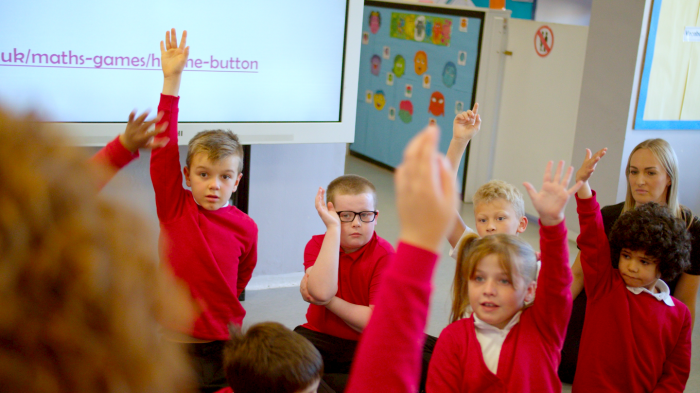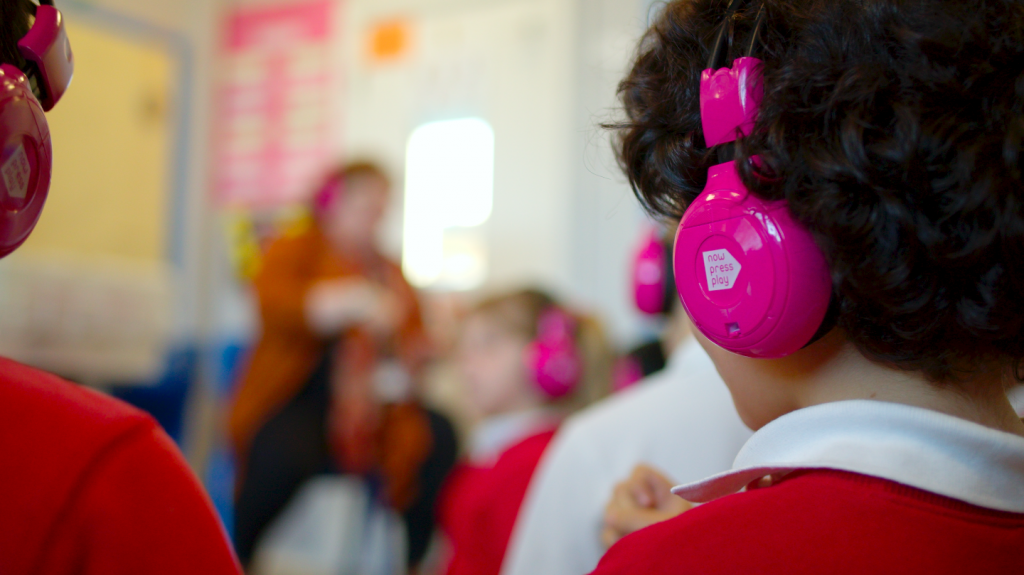
The Resource Provision at Parklands Primary School serves children from with Complex Communication Needs, supporting them to maximise their learning potential. Play-based and sensory learning are at the heart of the Resource Provision’s inclusive curriculum, helping cater to each child’s learning style. The school uses now>press>play to help achieve this, as our Experiences help children access the curriculum at any level through sound, story and movement.
We visited Parklands to speak with Resource Provision lead Claire Oates (as well as headteacher Chris Dyson) about why the school uses now>press>play to support its SEND learners.
Video:
Video transcript:
Why Parklands use now>press>play
Clarie Oates — I use now>press>play in my class because I find it a very inclusive learning tool and children can engage at a level that they want to. We try and use it to enhance each of our topics that we do, and sometimes maybe an ad hoc one — for example, The Gingerbread Man or Three Little Pigs, just for fun.
All of the children, I find, enjoy it. It may look on the first time that we do it that they’re not engaged, but they’re taking that story in, and then if we look at the story again or do now>press>play again a couple of days later, we get a completely different outcome where they’re engaged, they feel more confident and more comfortable to become a different character, and more relaxed.
The feedback that we get from the children is that they really enjoy it and they do understand what they’re being, what they’re listening to and the reasons behind it. So I think it’s done in a very appropriate way for the children.
Chris Dyson — Different children learn through different styles. The traditional way is just looking at a script and then learning through reading. But now>press>play allows you to learn through movement, so that’s for kinesthetic learners, it’s the children who learn through audio and through sound. So it ticks every single box.

How Parklands use now>press>play in their inclusive Resource Provision
Claire Oates: We use now>press>play for different topics throughout the year. We tend to use it maybe in the middle of a topic where the children have already had some experience of it and they’ve learned a bit about it. They get to learn a little bit more, which then we find reflects on the outcome of their learning.
So for example, during Black History Month, we learned about Harriet Tubman to begin with, and then we used now>press>play to experience what she went through and her life a little bit more. And that gave the children a better feel about who she was and what she went through and gave them a lot more knowledge as well.
In my class, we touch on Early Years topics as well as Key Stage 1. We sometimes dabble in Key Stage 2, if it’s appropriate, just because of the level of needs of my children in the resource provision where I work. We just go with what’s appropriate. But we find it enhances usually the middle section of our learning.

The impact of using now>press>play in an inclusive Resource Provision
Claire Oates — I think the impact on my class after a now>press>play Experience is extremely positive. They seem to have this confidence that comes from somewhere. I think it’s because they don’t have to be themselves while they’re doing it. So they become a different character or they can have a different way of thinking that they might not have thought of before.
I find that the confidence grows within my children, but also they become a lot more animated. So children who usually like to stand at the wall, arms folded. Time and time after we’ve done it, they’re becoming just a little bit more engaged in it, a little bit more participating. And I know that they’re learning even when they’re stood there, but it’s lovely to see them fully engaged in the Experience.
And asking the children if they like it, it always comes back with a “yes.”
Many thanks to the children and staff at Parklands Primary School for speaking to us about how they use now>press>play. We’re proud to help the school provide an inclusive Resource Provision for its students. We can’t wait to hear about their next adventures.
